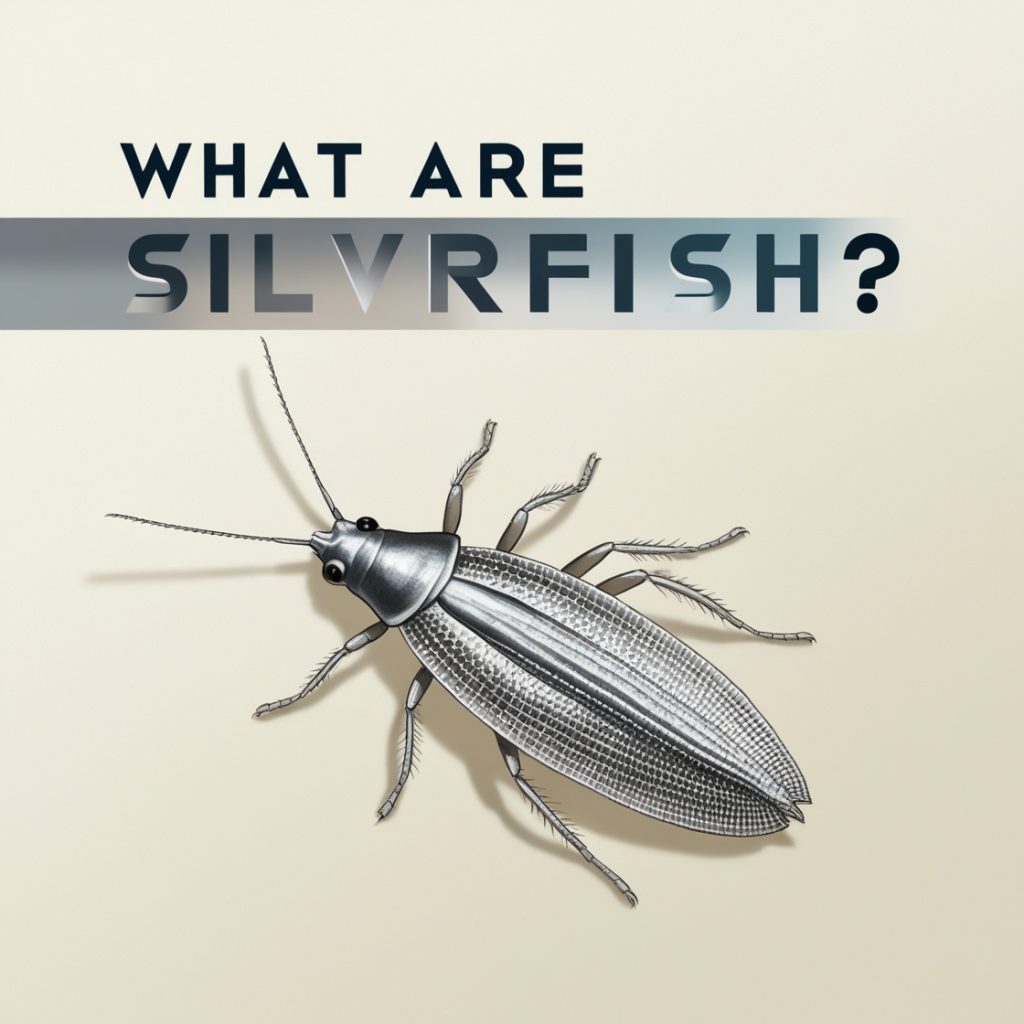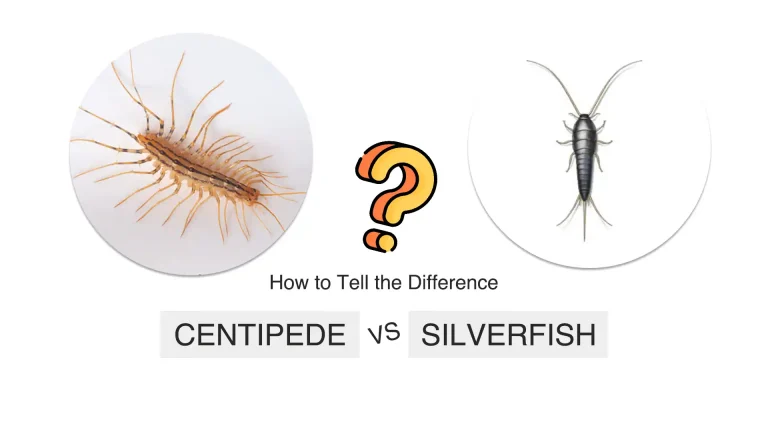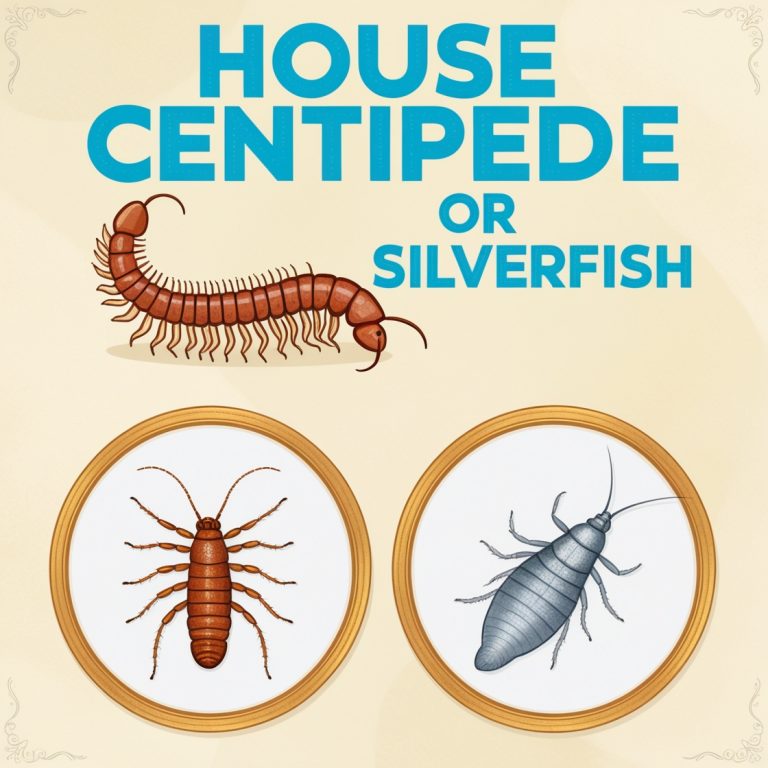How to Get Rid of Silverfish in Your Home: Effective Pest Control

- Understanding Silverfish: The Pest in Your Home
- Effective Ways to Get Rid of Silverfish Quickly
- Preventing Silverfish Infestations
- Professional Pest Control Services
- Long-Term Strategies to Keep Silverfish Away
- Understanding the Impact of Silverfish
- Frequently Asked Questions About Silverfish Control
Learn how to get rid of silverfish in your home quickly with effective pest control tips. Discover what attracts them and how to prevent future infestations in your home.
Understanding Silverfish: The Pest in Your Home
Silverfish are small, wingless insects that can become a nuisance in many households. These pests are often found in dark, damp areas of your home, making bathrooms and basements prime locations for silverfish infestations. To effectively get rid of silverfish, it’s crucial to understand their behavior and habits.
What Are Silverfish and Where Do They Live?

Silverfish are tiny, silvery-gray insects with a distinctive fish-like shape and movement. They can live for several years and are nocturnal, meaning you’re more likely to see silverfish activity at night. Silverfish can be found throughout your home, but they particularly love humid environments. You may notice silverfish in your bathroom, kitchen, or basement, as these areas often provide the moisture and food sources they need to thrive.
Silverfish can live in various parts of your house, including:
1. Behind baseboards
2. In wall cracks
3. Under floorboards
4. In attics and crawl spaces
5. Around plumbing fixtures
Since silverfish prefer dark and damp locations, you might find them in cardboard boxes, storage areas, or even in your closets.
Signs of a Silverfish Infestation
Recognizing the signs of a silverfish infestation is crucial for early detection and control. Some common indicators include:
1. Seeing silverfish scurrying away when you turn on lights
2. Small, dark droppings that resemble pepper
3. Yellow stains on fabrics or papers
4. Holes or damage in books, wallpaper, or clothing
If you’ve seen silverfish or noticed any of these signs, it’s likely you have a silverfish problem that needs addressing. Keep in mind that silverfish are often brought into homes through cardboard boxes or old furniture, so be cautious when introducing these items into your living space.
What Attracts Silverfish to Your Home?
Understanding what attracts silverfish to your home is key to preventing and controlling infestations. Silverfish are attracted to areas with high humidity and readily available food sources. They feed on a variety of materials, including:
1. Starches and carbohydrates
2. Protein-rich substances
3. Cellulose materials like paper and cardboard
Silverfish can eat through books, wallpaper, and even clothing, causing damage to your belongings. Silverfish may also consume:
1. Glue in book bindings
2. Cereals and grains
3. Dead insects
4. Human hair and dandruff
By identifying and eliminating these attractants, you can make your home less inviting to silverfish and other pests.
Effective Ways to Get Rid of Silverfish Quickly
When you’ve found silverfish in your house, you’ll want to learn how to get rid of them as quickly as possible. There are several methods you can employ to eliminate silverfish from your home, ranging from natural remedies to chemical solutions.
Natural Methods to Eliminate Silverfish
If you prefer to get rid of silverfish naturally, consider these eco-friendly options:
1. Diatomaceous Earth: Sprinkle this natural powder in areas where you’ve seen silverfish. It dehydrates the insects, effectively killing them.
2. Cedar Oil: Silverfish dislike the smell of cedar. Use cedar oil or cedar-scented products to repel them.
3. Boric Acid: This natural insecticide can be sprinkled in areas where silverfish frequent. Be cautious if you have pets or children, as it can be harmful if ingested.
4. Sticky Traps: Place sticky traps in areas where you’ve noticed silverfish activity. These traps will catch silverfish, allowing you to monitor and reduce the population.
5. Cinnamon: Sprinkle ground cinnamon in areas where you’ve seen silverfish. The strong scent repels them.
6. Cloves: Similar to cinnamon, cloves have a strong scent that silverfish don’t like. Place whole cloves in problem areas.
Chemical Solutions for Silverfish Control
For more severe silverfish infestations, you may need to resort to chemical treatments:
1. Insecticide Sprays: Use a silverfish-specific insecticide spray in affected areas. Follow the instructions carefully and ensure proper ventilation.
2. Insecticide Dust: Apply insecticide dust in cracks and crevices where silverfish may hide.
3. Baits: Place silverfish baits in areas of high activity. These contain both attractants and insecticides to lure and kill silverfish.
4. Growth Regulators: These products disrupt the silverfish life cycle, preventing them from reproducing.
How to Kill Silverfish as Quickly as Possible
To kill silverfish quickly and effectively:
1. Combine multiple methods: Use a combination of natural and chemical treatments for comprehensive control.
2. Target hiding spots: Focus on areas where silverfish are most likely to hide, such as behind baseboards, in closets, and under sinks.
3. Be persistent: Repeat treatments regularly to ensure you eliminate silverfish and their eggs.
4. Address moisture issues: Fix leaks and use dehumidifiers to reduce humidity, making your home less hospitable to silverfish.
5. Vacuum regularly: This helps remove silverfish, their eggs, and potential food sources.
Preventing Silverfish Infestations
Prevention is key when it comes to silverfish control. By taking proactive measures, you can keep silverfish away and avoid future infestations.
Identify and Seal Entry Points
Silverfish can enter your home through small cracks and gaps. To prevent their entry:
1. Inspect your home’s exterior for potential entry points.
2. Seal cracks and crevices with caulk or weatherstripping.
3. Install door sweeps to close gaps under doors.
4. Repair or replace damaged window screens.
5. Check for gaps around pipes and utility lines entering your home.
Reduce Moisture in Problem Areas of Your Home
Since silverfish love damp environments, controlling moisture is crucial:
1. Use dehumidifiers in basements and other humid areas.
2. Fix leaky pipes and faucets promptly.
3. Ensure proper ventilation in bathrooms and kitchens.
4. Use exhaust fans when showering or cooking to reduce humidity.
5. Address any standing water issues in and around your home.
6. Ensure proper drainage around your home’s foundation.
Remove Potential Food Sources
Eliminating food sources is an effective way to get rid of silverfish and prevent future infestations:
1. Store food in airtight containers.
2. Regularly clean up crumbs and spills.
3. Keep books and papers in dry, sealed containers.
4. Vacuum and dust regularly to remove potential food particles.
5. Dispose of old newspapers, magazines, and cardboard boxes.
6. Store clothing and linens in sealed plastic containers.
Professional Pest Control Services
Sometimes, despite your best efforts, you may need to enlist the help of a professional pest control service to effectively eliminate silverfish from your home.
When to Call a Pest Control Service
Consider contacting a pest control service if:
1. You have a severe silverfish infestation that home remedies can’t control.
2. You’ve tried multiple methods without success.
3. You’re allergic to silverfish or concerned about potential health risks.
4. You want a comprehensive approach to pest management.
5. You notice silverfish and other pests in your home.
What to Expect from Professional Silverfish Control
A professional pest control service will:
1. Conduct a thorough inspection of your home.
2. Identify silverfish entry points and hiding spots.
3. Develop a customized treatment plan.
4. Use professional-grade products and techniques for silverfish elimination.
5. Provide follow-up treatments and prevention advice.
6. Offer guidance on long-term pest prevention strategies.
Long-Term Strategies to Keep Silverfish Away
To maintain a silverfish-free home in the long term, it’s essential to implement ongoing prevention strategies.
Regular Home Maintenance to Prevent Silverfish
1. Conduct regular inspections of your home for signs of silverfish or other pests.
2. Keep your home clean and decluttered to reduce hiding spots for silverfish.
3. Address any moisture or humidity issues promptly.
4. Maintain proper ventilation throughout your home.
5. Regularly check and clean gutters to prevent water accumulation near your home.
6. Trim vegetation away from your home’s exterior to reduce moisture and potential entry points.
Natural Repellents to Help Get Rid of Silverfish
In addition to the methods mentioned earlier, consider using these natural repellents:
1. Bay leaves: Place bay leaves in areas where silverfish may frequent.
2. Cinnamon: Sprinkle cinnamon in problem areas, as silverfish dislike the scent.
3. Lavender: Use lavender sachets or essential oils to repel silverfish.
4. Citrus peels: Place dried citrus peels in closets and drawers to deter silverfish.
5. Cucumber slices: Place fresh cucumber slices in areas where you’ve seen silverfish.
6. Salt: Sprinkle salt in affected areas, as it can dehydrate silverfish.
By implementing these strategies and remaining vigilant, you can effectively control silverfish and protect your home from future infestations. Remember, persistence is key when dealing with these resilient pests. If you continue to struggle with silverfish despite your efforts, don’t hesitate to seek professional help. A pest control expert can provide targeted solutions and help you maintain a silverfish-free home.
Understanding the Impact of Silverfish
While silverfish don’t bite humans and aren’t known to transmit diseases, they can cause other problems in your home.
Damage Caused by Silverfish
Silverfish can cause significant damage to your belongings:
1. Paper products: Books, wallpaper, and important documents can be eaten by silverfish.
2. Textiles: Clothing, especially items containing natural fibers like cotton or silk, can be damaged.
3. Food contamination: While not harmful, silverfish can contaminate food sources, making them unappetizing.
4. Aesthetic issues: The presence of silverfish can be unsightly and distressing for homeowners.
Health Concerns Related to Silverfish
Although silverfish don’t pose direct health risks, they can indirectly affect human health:
1. Allergies: Some people may be allergic to silverfish, experiencing symptoms like asthma or eczema.
2. Psychological impact: The presence of pests in the home can cause stress and anxiety for some individuals.
Frequently Asked Questions About Silverfish Control
How Fast Do Silverfish Reproduce?
Silverfish can lay up to 100 eggs in their lifetime, with eggs hatching in 2-8 weeks. This rapid reproduction rate emphasizes the importance of early intervention and consistent pest control efforts.
Can Silverfish Climb Walls?
Yes, silverfish can climb walls and even walk on ceilings due to their ability to cling to smooth surfaces. This makes it essential to consider vertical spaces when implementing control measures.
Are There Any Benefits to Having Silverfish?
While silverfish are generally considered pests, they can serve as food for other beneficial creatures like spiders and centipedes. However, the damage they cause typically outweighs any potential benefits in a household setting.
In conclusion, while silverfish can be a persistent and frustrating pest, there are numerous effective ways to get rid of them and prevent their return. By understanding their behavior, implementing a combination of natural and chemical control methods, and maintaining a clean, dry home environment, you can successfully eliminate silverfish and enjoy a pest-free living space. Stay proactive in your approach to pest control, and you’ll be well-equipped to handle any silverfish problems that may arise in the future. Remember, a multi-faceted approach combining prevention, treatment, and ongoing maintenance is the key to long-term success in keeping your home free from silverfish and other pests.






